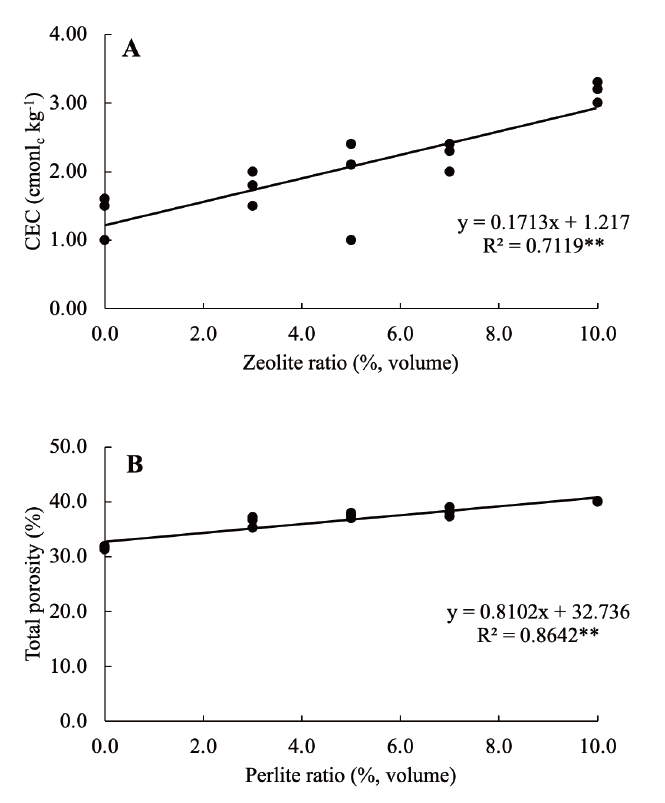Abstract
This study was conducted to evaluate the effect of the mixed ratio of zeolite and perlite as soil amendment on the soil physicochemical properties applied to golf course green. The soil amendments were 0, 3, 5, 7 and 10% by soil volume. Soil chemical factors such as pH, electrical conductivity (EC) and cation exchangeable capacity (CEC) were increased by higher proportion of zeolite amount, while not significantly different perlite addition. Soil physical factors like capillary porosity, air-filled porosity and total porosity were increased perlite proportion, while not significantly different in zeolite treatments. For correlation coefficients between percentage of soil amendments and soil physicochemical factor, zeolite was positively correlated with CEC (
Figures & Tables

Fig. 1. Linear regression between blending ratio of soil amendments like zeolite and perlite and main soil factor. A: Correlation coefficient between blending ratio of zeolite and CEC (cation exchangeable capacity); B: Correlation coefficient between blending ratio of perlite and total porosity. ** represents a significance at the 0.01 probability, respectively..


